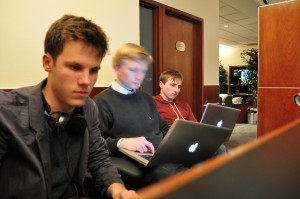“A Developing Breed: Creative Technologist”
For many outsiders looking in, the endemic talents and skills of a web entrepreneur are perceived as being extremely rare and nearly impossible to comprehend. It’s not uncommon for someone who isn’t involved with technology to cringe when the hear terms such as “Front-End Developer”,”Server-Side Developer”,”UX Designer”,”Software Engineer”. The truth is that there are distinguishable skill sets among the different roles, and each task will likely require very specific knowledge. However, from my various short eye-opening experiences working and interacting with highly successful people in technology, nearly all of them practice the psychology of a “Creative Technologist”.
I was recently browsing one of my favorite websites which is built entirely in Adobe Flash, AgencyNet, and I have visited several times previously for idea inspration. The agency places the value of visual stimulation, uniqueness, and experience above all else. To that end, I noticed a career opening they are advertising on their site, Creative Technologist. I believe that their goal to hire people who can create effective solutions to problems with a creative mindset is a tribute to the highly publicized startup founders that we’ve started to idolize in the past decade.
The unquantifiable skills of a Creative Technologist are likely to be found in the character and actions of any passionate leader. Take a minute to brief yourself on these traits which can apply to almost any career:
If you’ve managed to figure out how to execute a healthy balance of everything above, then it’s likely you already have proficiency in the specific skills of a Creative Technologist below:
One final thing I’d like to emphasize is the Education aspect of a Creative Technologist. From my best knowledge, I have found that every high achiever that I’ve ever gotten to know is also a voracious reader. Sometimes this goes without saying, but if you are really passionate about a particular field or interest, then learning becomes autodidactic. The relentless pursuit of knowledge and information is a key component to why some people achieve their ambitions to a high level, and others settle for mediocrity. In my own personal experience, I have not found traditional literature and fantasy taught in school to be intriguing or interesting. Even though you might not find me reading classic novels often, I could not imagine a day that I did not read a magazine article at breakfast, or did not read technology and business blogs for at least an hour each night. This incremental increase in awareness of all things related to internet startups has allowed me to capitalize on several fortunate opportunities.
My best advice to aspiring Creative Technologists would be to find a passion, and take action towards your vision. After a while the necessary talents and skills not only become more clear, they become more attainable.




